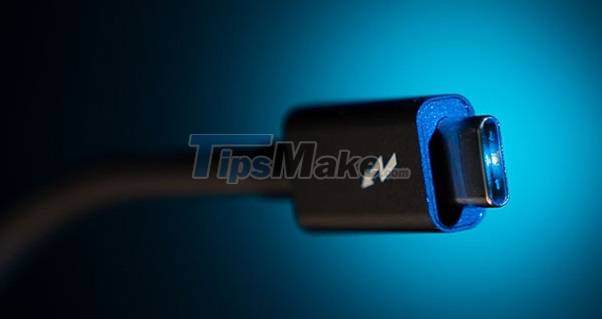After more than 2 years of being announced, why is DisplayPort 2.0 still not really popular?
However, due to the outbreak of the Covid-19 pandemic on a global scale at the end of 2019, this connection standard has not been released or used commonly on technology products so far. Can the tech world see the 'debut' of DisplayPort 2.0 later this year, or will it have to wait until 2022?
The Video Electronics Standard Association (VESA), is the organization responsible for providing the reference point for DisplayPort technology, as well as for any standard specifications for the technology. With the recent statement from VESA, whether to apply the new DisplayPort 2.0 or not is now completely in the hands of hardware manufacturers.
In the past 2 years, the absence of conferences, face-to-face meetings, as well as specialized meetings due to the impact of the pandemic has made it difficult to discuss and solve problems arising with technology. This becomes significantly more difficult. This partly explains the 'concern' of manufacturers in applying new technology.
 After more than 2 years of being announced, why is DisplayPort 2.0 still not really popular? Picture 1
After more than 2 years of being announced, why is DisplayPort 2.0 still not really popular? Picture 1
VESA has also been unable to conduct PlugTest tests, which is a factor in helping companies get ready for the release of DisplayPort 2.0. In addition, PlugTests will also allow to detect and eliminate any potential problems with this new technology. This fact has also made the application of DisplayPort 2.0 limited, because of the potential risks that may occur.
As for DisplayPort 2.0, this new technology is expected to enhance support for Ultra High Bit Rates, allowing up to 20 gigabits/s per lane, which is more than three times the output of DisplayPort 1.4. a. The increased data transfer rate to a total of nearly 80 gigabits per second allows DisplayPort 2.0 to support displays up to 10K resolution, using an uncompressed stream at 60 hertz, or two 4K resolution displays at 60 hertz. 14 hertz peak. Display Stream Compression (DSC), which enables support for higher resolutions.
The DisplayPort 2.0 connection standard will use USB-C ports and operate on Thunderbolt 3 technology. Although Thunderbolt is usually limited to 40Gb/s, it does support 2-way connections. Whereas DisplayPort is a one-way connection, it is entirely possible to use the full 80Gbps bandwidth of this protocol. Of course you will need to use special cables to support the full transmission bandwidth, but the plus here is that DisplayPort 2.0 will require fewer types of connectors.
Carrying many such outstanding advantages, but due to subjective and objective reasons, it will take more time for this technology to appear popular around the world.
You should read it
- Things to know about DisplayPort 2.0
- How to diagnose and fix DisplayPort not working
- What is DisplayPort? Compare DisplayPort port and HDMI port
- Differentiate DisplayPort and HDMI
- The new DisplayPort specification enables 16K video transmission via USB-C
- How does DisplayPort 2 stand out?
- Officially has DisplayPort 1.3 standard to support 5K screen
- DisplayPort 2.0 officially launched, supporting dual 8K display at 120Hz
- Intel Arc 'Alchemist' GPU Will Come With DisplayPort 2.0, Support Up To 16K Display Resolution
- What are VGA, DVI, HDMI, DP (DisplayPort) ports on the computer? How to distinguish them
- The fastest USB-C hub that Sony has ever built officially, provides transfer speeds of up to 1000MB / s
- Apple LED Cinema Display is equipped with Thunderbolt
May be interested

Intel ARC Xe-HPG 'Alchemist' GPU Leak: High Performance, Launching in 2022

Botnets can change CPU settings to increase mining performance

Leaked benchmark results of AMD Radeon RX 6700M 'Navi 22' laptop GPU

NBMiner releases 'hack' that can restore 70% of 'mining' performance on NVIDIA's Ampere LHR GPU

Revealed Intel Core i9-12900K Alder Lake-S CPU configuration with 16 cores, 24 threads, supports DDR4 RAM

Why is the Galaxy Z Flip 3 not equipped with an under-screen camera that the Galaxy Z Fold 3 has?






 Things to know about DisplayPort 2.0
Things to know about DisplayPort 2.0 How does DisplayPort 2 stand out?
How does DisplayPort 2 stand out? DisplayPort 2.0 officially launched, supporting dual 8K display at 120Hz
DisplayPort 2.0 officially launched, supporting dual 8K display at 120Hz Officially has DisplayPort 1.3 standard to support 5K screen
Officially has DisplayPort 1.3 standard to support 5K screen How to diagnose and fix DisplayPort not working
How to diagnose and fix DisplayPort not working What is DisplayPort? Compare DisplayPort port and HDMI port
What is DisplayPort? Compare DisplayPort port and HDMI port